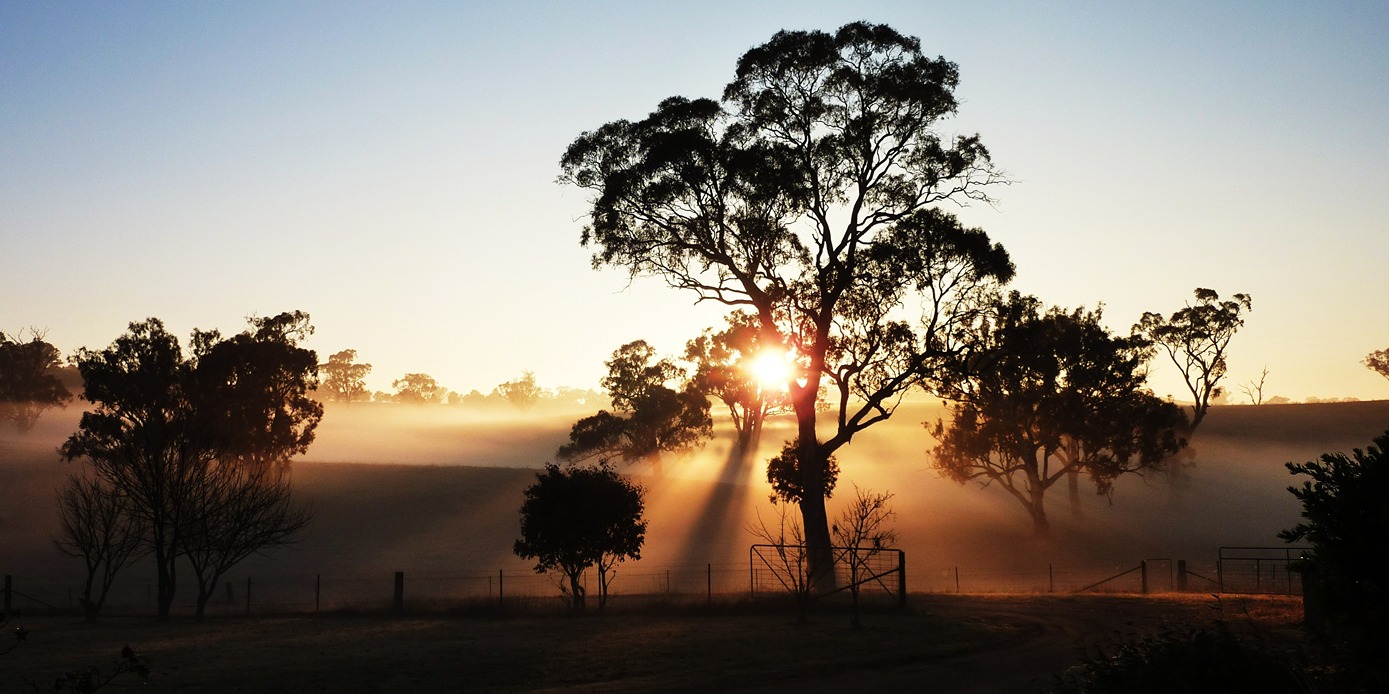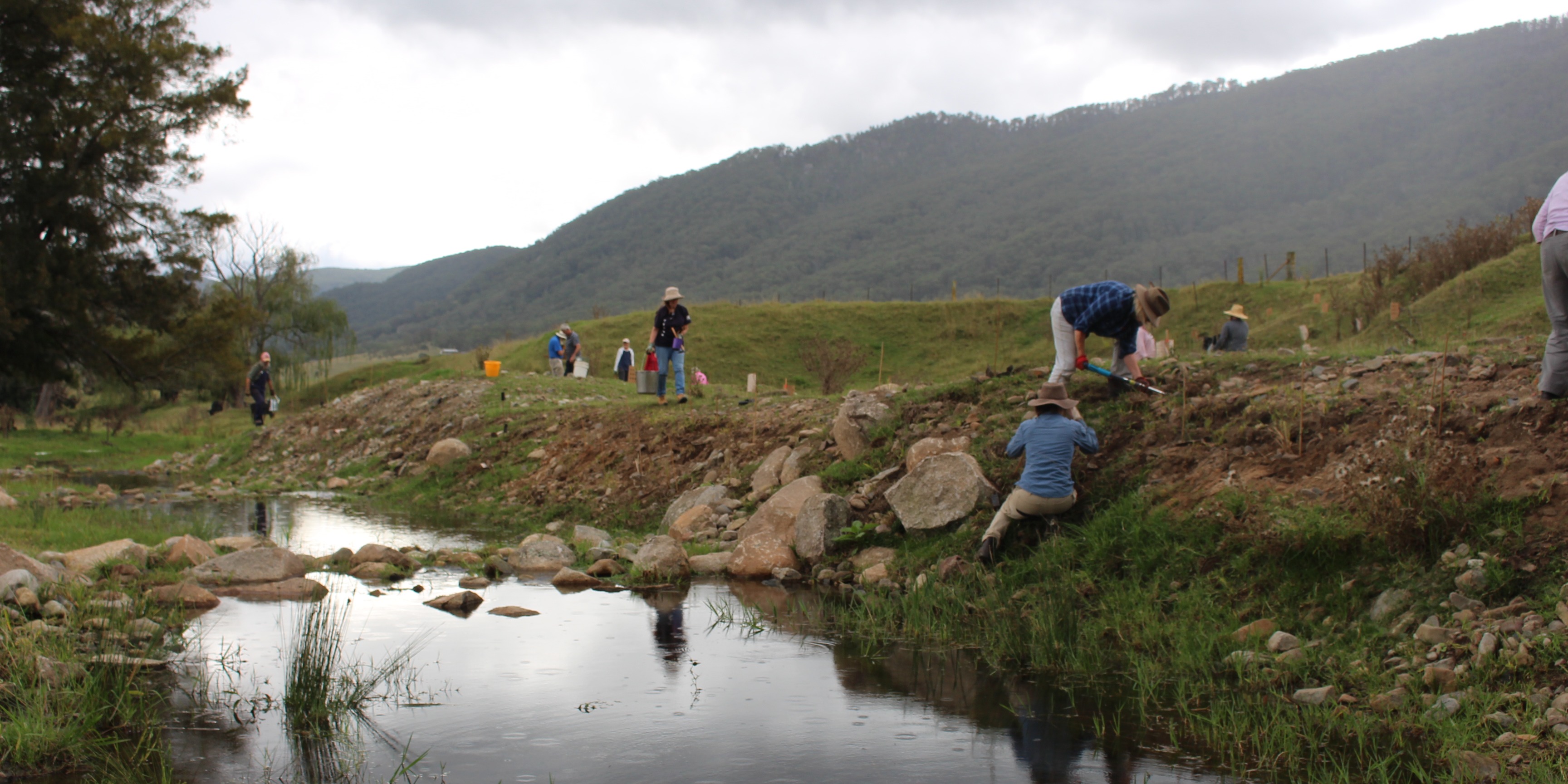About this case study
Flood
Communities
Risk management
After gold was discovered in the Araluen Valley in 1851, dredgers turned the local waterways upside down in search of fortune.
The practice of dredging – where water is directed at riverbanks to dislodge sediment and expose gold – left behind environmental destruction that continues to have consequences as our climate changes.
In the Araluen Valley, the 19 separate flooding events that followed the Black Summer bushfires uprooted trees, deposited tonnes of sand into already shallow creek beds and exacerbated long-standing erosion issues.
Many landholders had taken proactive steps following the bushfires by fencing off erosion zones from livestock and planting some trees. But the scale of the destruction was such that only major remediation work would stabilise Araluen Creek and its tributaries.
The Upper Deua Catchment Landcare Group (UDCLG) knew what was needed. Since it was formed in 1996, the UDCLG had led projects to repair and protect the fragile waterways of the Araluen Valley. In 2007, a system of 200 logs had been strategically anchored at 16 sites along Araluen Creek to slow the water’s flow. The ponds created by the logs enhanced biodiversity, improved water quality and won the UDCLG national recognition.
We have shown how Landcare projects can fix the past, plant the future, adapt to a changing climate and build community resilience.
Penny Hayman, Secretary, Upper Deua Catchment Landcare Group
To tackle this far bigger challenge, the UDCLG secured a $290,000 grant from the Bushfire Community Recovery and Resilience Fund, a program delivered by the Australian and NSW governments.
A Community Liaison Officer was appointed, and the work began. Teaming up with local landholders and partners Local Land Services, Soil Conservation Service and Upper Shoalhaven Landcare Council, UDCLG assessed the damage and identified 13 sites requiring immediate attention.
“It's important to fix small problems early,” says Lyall Bogie, Senior Environmental Officer at Soil Conservation Service. “We might have lost 50 tonnes of soil, but if we get another flood that might become 500 tonnes of soil. The trees fall into the creek, and it just compounds over time. Then we get really big problems.”
UDCLG chose sites with the worst stream bed erosion and bank collapse, sediment movement, stream deviations, weed infestation and instability.
Two thousand trees will send down two thousand root systems, which will mean the creek has more bank stabilisation. Multiple sites have been restored, a diversity of new plants will offer habitat for species and we have created a fantastic natural asset for our community.
Erin Brinkley, Local Landcare Coordinator, Upper Shoalhaven Landcare Council
More than 460 tonnes of large rocks were laid at various bends to slow the flow of water. Fences were erected to protect the creek bed from cattle. And after a few false starts, more than 2,000 trees were propagated, and community tree-planting hosted in the Autumn of 2023.
With the help of the Upper Shoalhaven Landcare Council, six community workshops were hosted on complementary topics like erosion control, weed management and seed propagation. And a short film, shot by award-winning documentary filmmaker Clare Young, was commissioned to capture the lessons learnt.

It was an enormous undertaking for a small community of volunteers – and more than 1,500 volunteer hours were devoted to the project.
The next steps for UDCLG? More of the same, says Penny Hayman. “Ongoing management and monitoring of the waterway is essential. This project has ended but our work never does.”
Case studies

The Living Lab, located in a Lismore main street, is a design and research collaborative conceived following the floods of 2022, which wrought untold havoc on the Northern Rivers region.

The Hawkesbury–Nepean Valley is managing flood risk by considering climate change impacts with input from local councils, businesses and the community.
